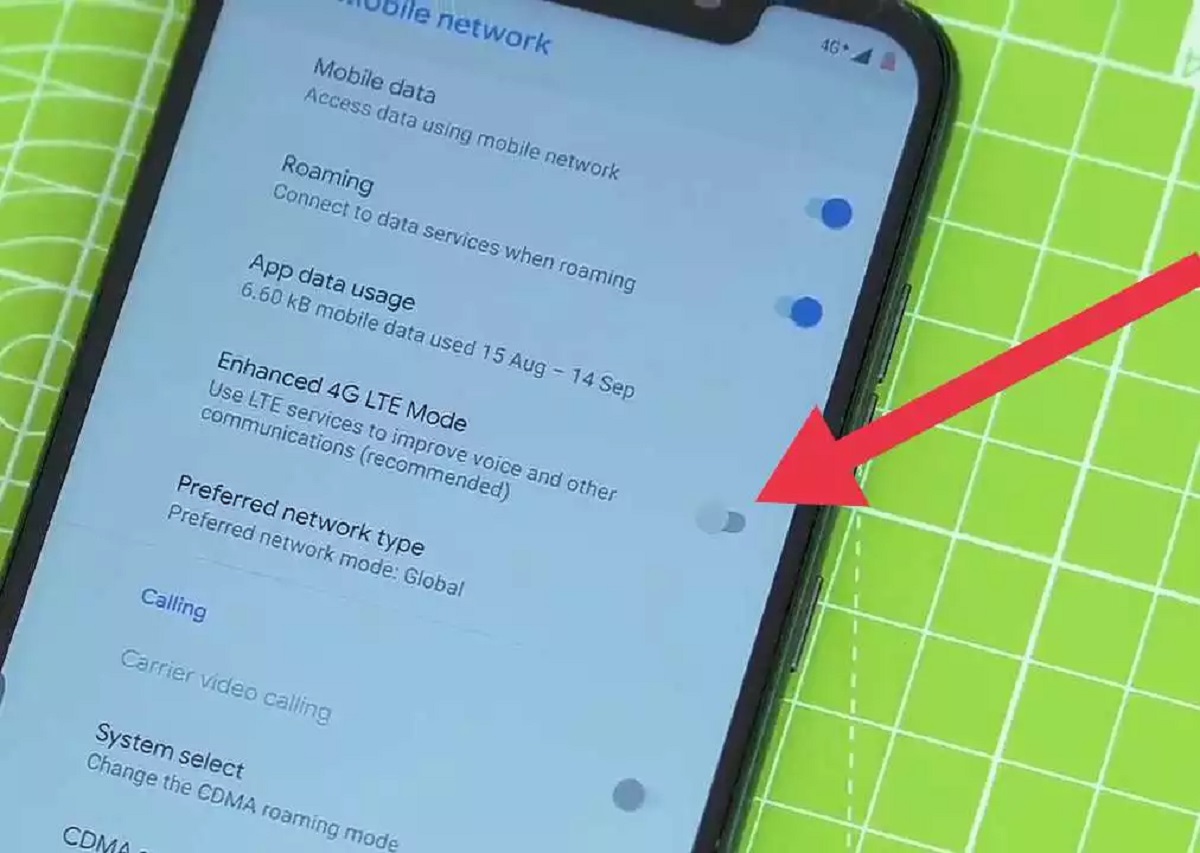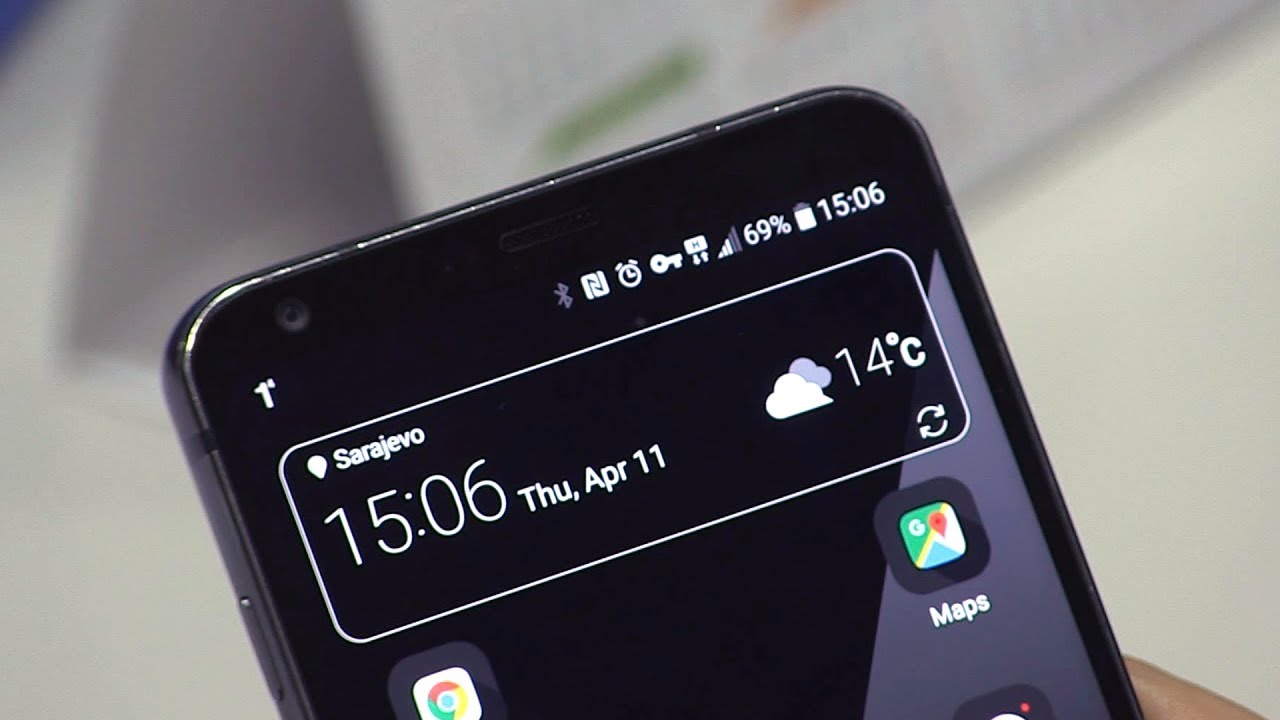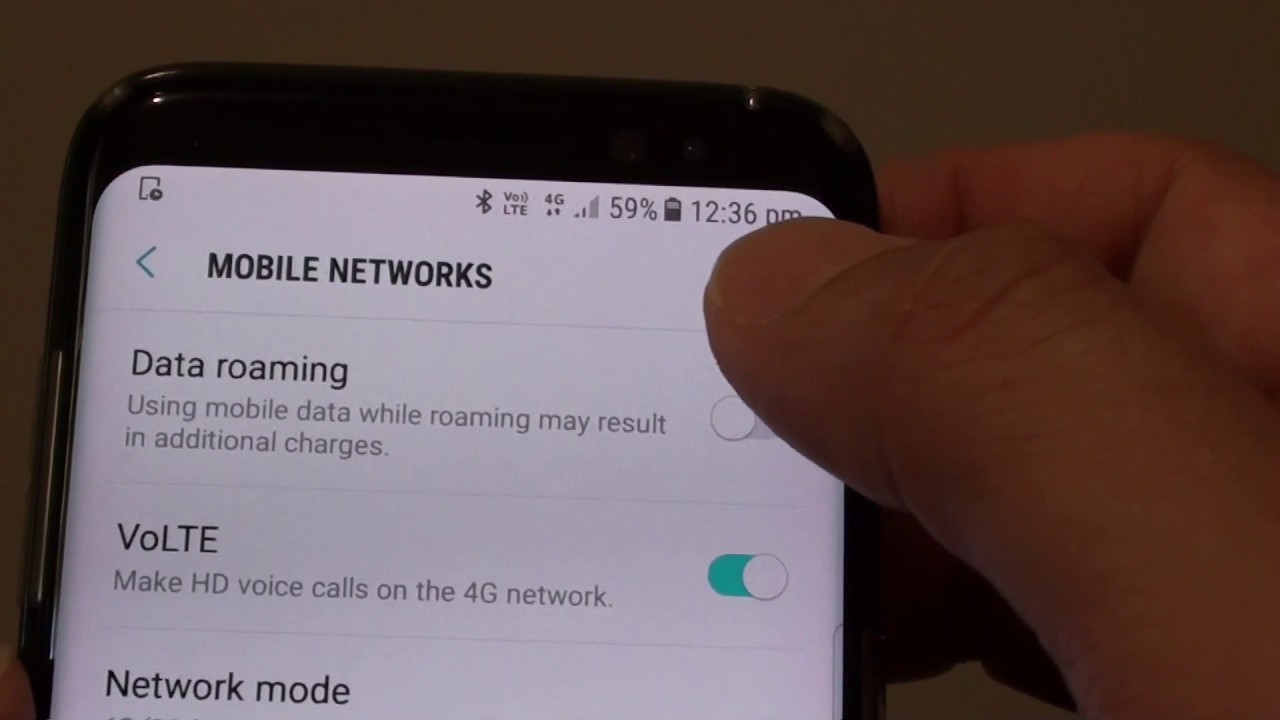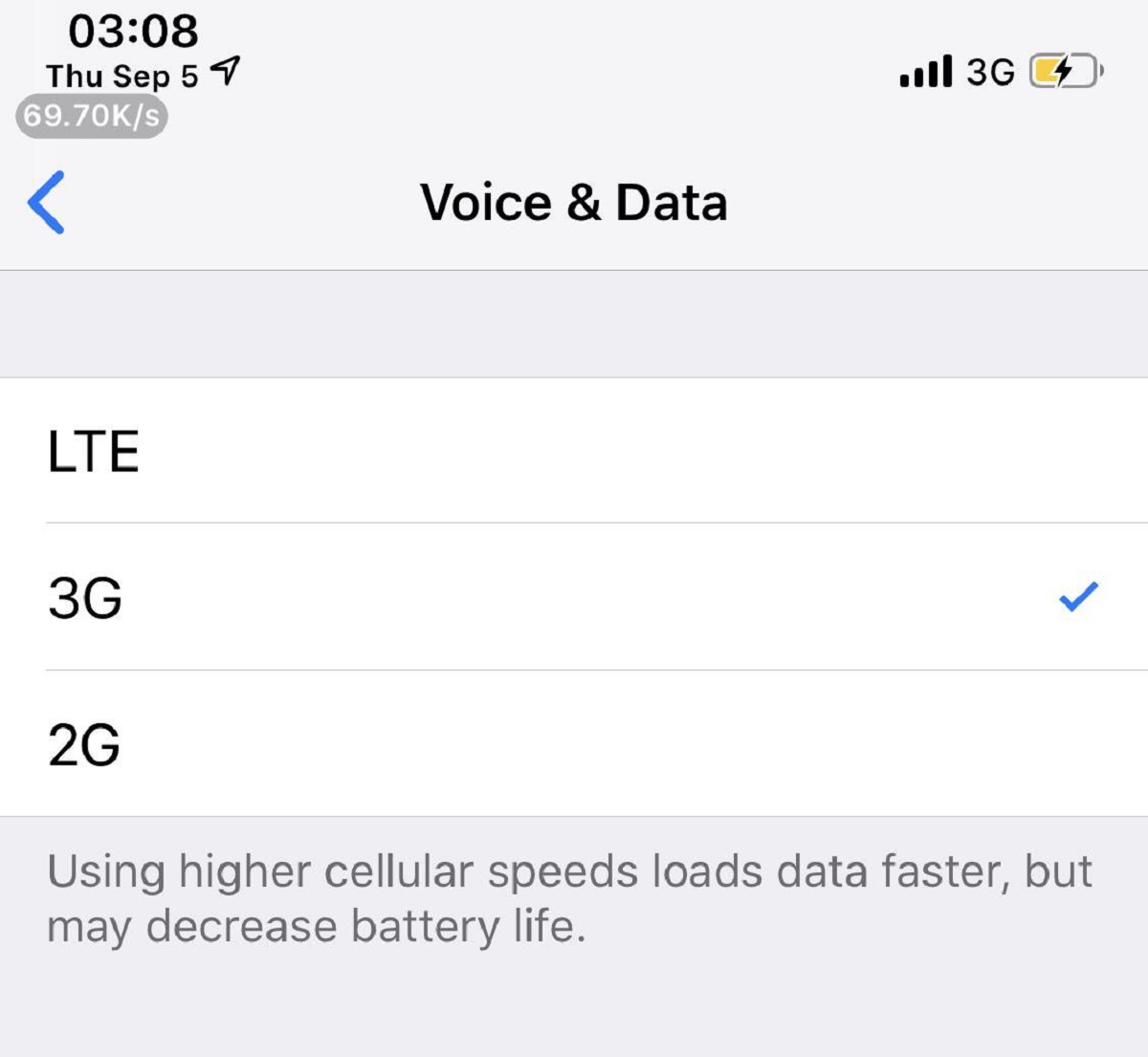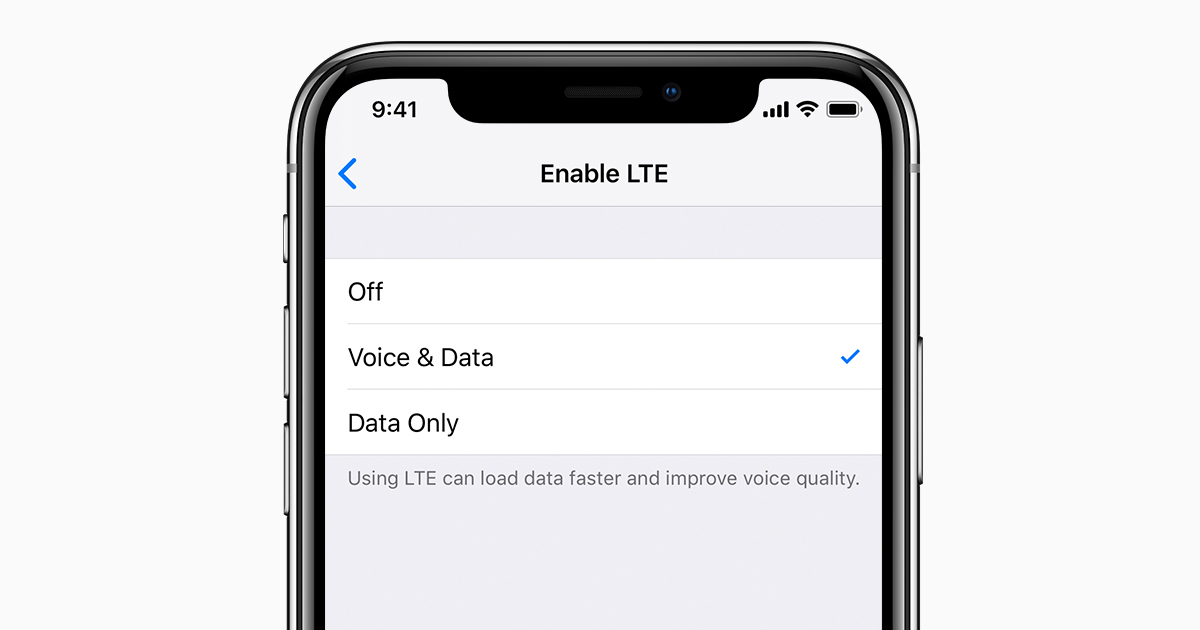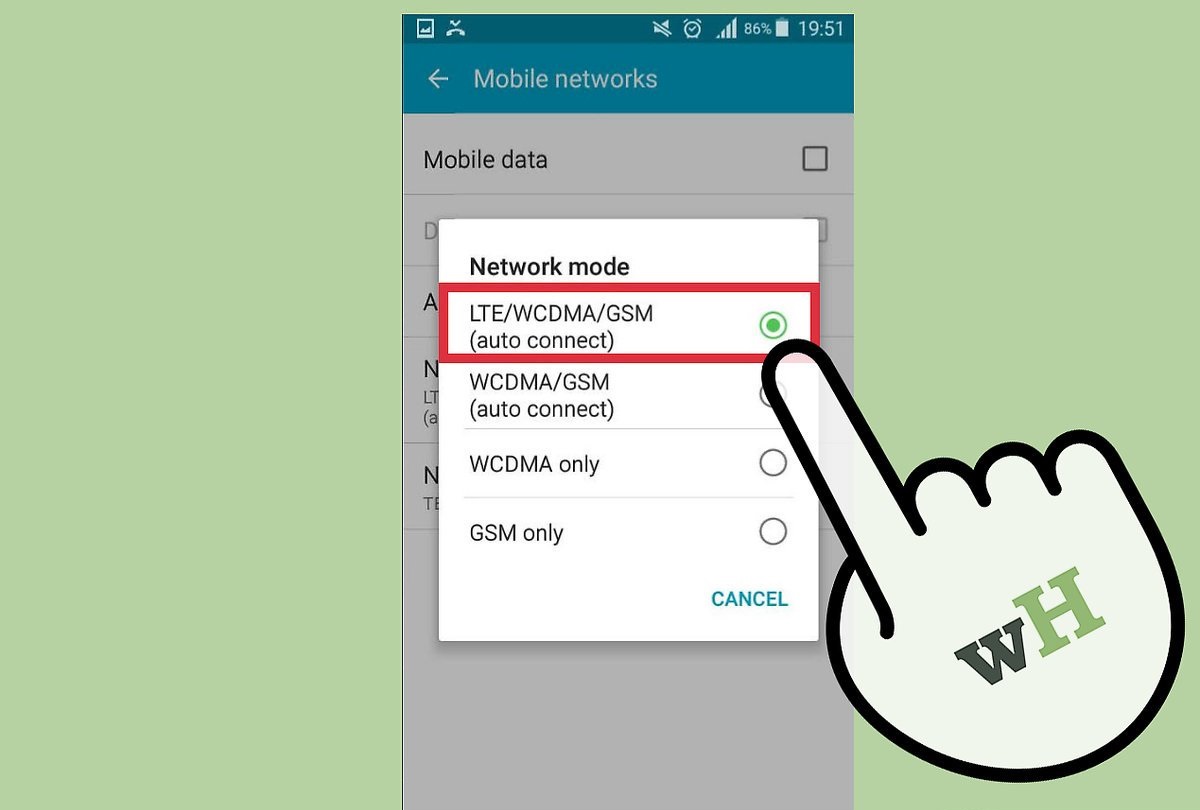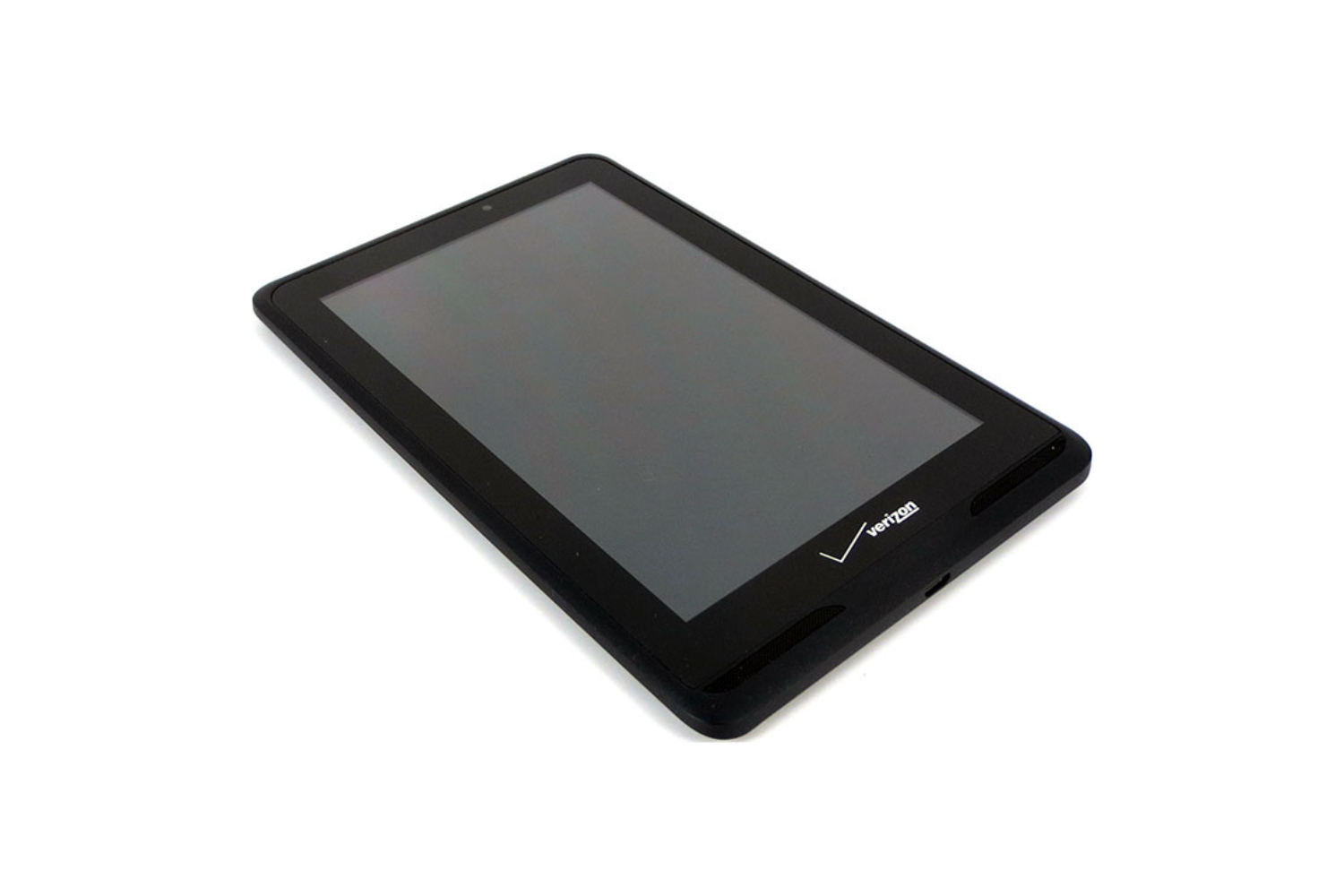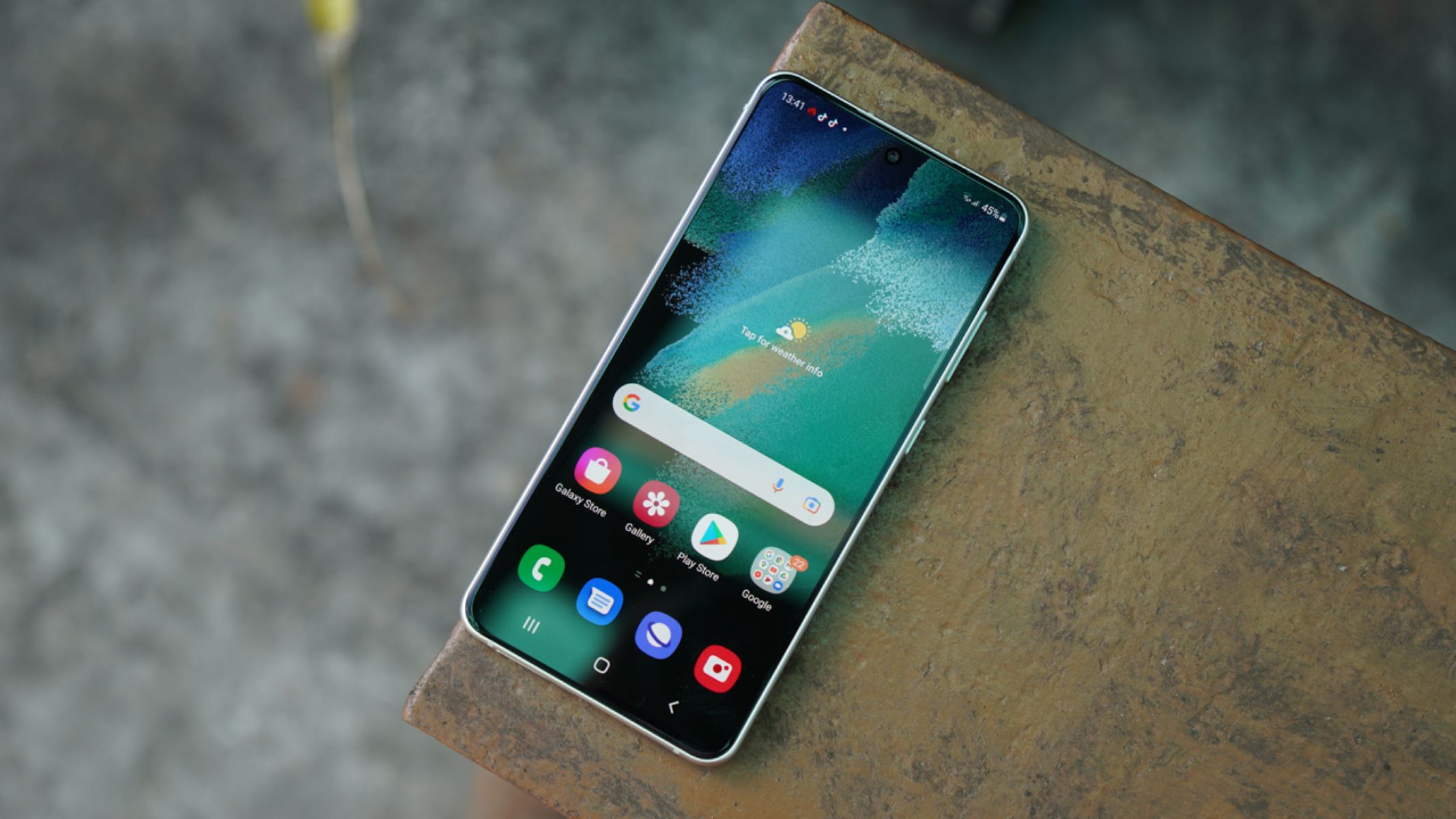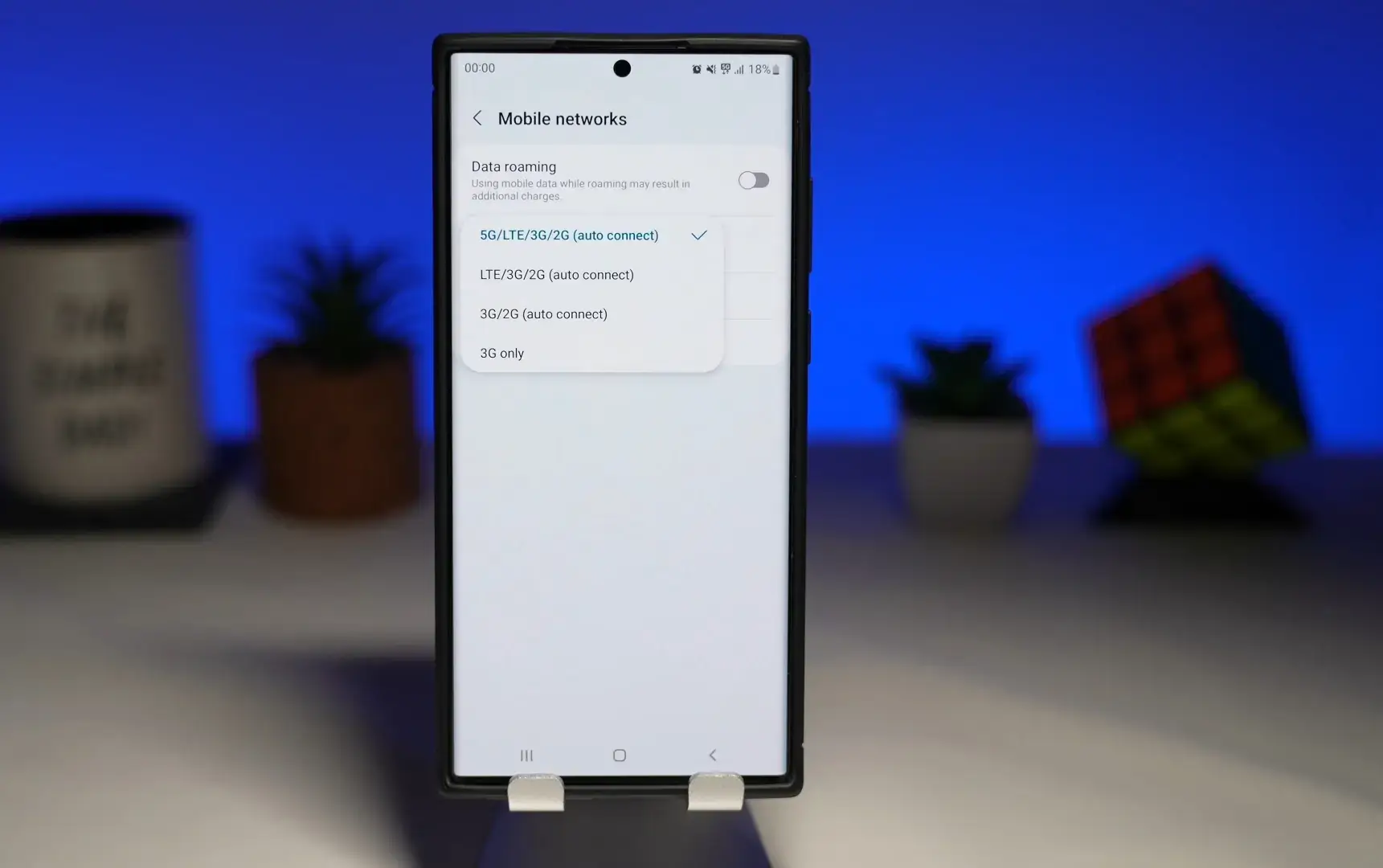Introduction
Having a reliable and fast 4G connection is essential for staying connected in today’s fast-paced world. However, there may be instances where you find yourself struggling with your 4G network. Whether you are experiencing slow internet speeds, intermittent connectivity, or no signal at all, it can be frustrating when your 4G is not working as expected.
In this article, we will explore the various reasons why your 4G might not be functioning properly and provide troubleshooting steps to help you resolve these issues. From coverage problems and signal interference to incorrect APN settings and software glitches, we will address the most common culprits behind 4G connectivity problems. By understanding the potential causes, you’ll be better equipped to identify and troubleshoot the issues you may encounter with your 4G connection.
It’s important to note that while some problems can be resolved with simple troubleshooting steps, others may require assistance from your network provider. By following the troubleshooting tips outlined in this article, you can determine whether the issue can be resolved independently or if you need to contact your service provider for further assistance.
Now, let’s dive into the possible reasons your 4G might not be working and explore the steps you can take to troubleshoot and fix the issues.
Possible Reasons for 4G Not Working
There are several possible reasons why your 4G connection may not be working properly. Let’s explore the most common culprits behind 4G connectivity issues:
- Coverage Issues: One of the primary factors that can affect your 4G connection is inadequate coverage in your area. If you are in a location with poor network coverage, you may experience weak or no signal. This can be particularly noticeable in remote areas or buildings with thick walls that block the signal.
- Signal Interference: Another common issue is signal interference. Your 4G connection can be negatively affected by various electronic devices or environmental factors. Obstacles like tall buildings, dense vegetation, or even weather conditions can weaken the signal and impact your connectivity.
- Network Congestion: 4G networks can become congested in high-traffic areas, resulting in slow internet speeds or even disconnections. During peak usage hours, such as in densely populated areas or at major events, the increased number of connected devices can overload the network infrastructure and affect the performance of your 4G connection.
- Incorrect APN Settings: Access Point Name (APN) settings are crucial for establishing a connection with your mobile network provider. If your APN settings are incorrect or have been accidentally changed, it can prevent your 4G connection from working correctly. Ensuring that you have the correct APN settings is essential to maintain proper connectivity.
- Software Issues: Sometimes, software-related problems can hinder the functionality of your 4G connection. Outdated operating systems, firmware glitches, or incompatible apps can interfere with your device’s ability to connect to the 4G network and maintain a stable connection.
- Hardware Problems: In rare cases, hardware issues can be the cause of your 4G connectivity problems. This can include a faulty SIM card, a damaged antenna, or a malfunctioning device. If you have ruled out other troubleshooting options and the problem persists, it may be necessary to have your device examined by a professional technician.
Now that we have examined the potential reasons for your 4G not working, let’s move on to the troubleshooting steps you can take to resolve these issues and get your 4G connection back up and running smoothly.
Coverage Issues
One of the primary culprits behind a malfunctioning 4G connection is insufficient network coverage in your area. Network coverage can vary depending on your geographical location, proximity to cell towers, and the infrastructure of your network provider. If you find yourself in a location with poor coverage, it can significantly impact the performance of your 4G connection.
In areas with weak coverage, you may experience a weak or fluctuating signal, slow internet speeds, or even a complete loss of connectivity. This can be especially noticeable when you are indoors, in remote areas, or in buildings with dense walls that obstruct the signal.
To address coverage issues, you can take the following steps:
- Check Network Coverage Maps: Most network providers offer online coverage maps that allow you to check the signal strength in your area. Visit your network provider’s website or contact their customer support to access these maps and determine if your location falls within the coverage area.
- Try Different Locations: If you are experiencing poor coverage indoors, try moving to a different area within your location or even stepping outside. Sometimes, simply changing your position can improve the strength of the signal.
- Invest in a Signal Booster: If you consistently face coverage issues in a specific location, consider investing in a signal booster. A signal booster amplifies and extends the network signal, providing improved coverage and potentially resolving connectivity problems.
- Consider Wi-Fi Calling: If your network coverage is consistently poor, you may want to utilize Wi-Fi calling. Many smartphones now offer the option to make calls and send messages using a Wi-Fi connection instead of relying solely on cellular coverage. Keep in mind that this feature relies on a stable Wi-Fi connection, so ensure your internet router is functioning properly.
By being aware of coverage issues in your area and exploring these solutions, you can improve your 4G connection’s reliability and minimize disruptions caused by network coverage limitations.
Signal Interference
Signal interference is a common culprit for disrupted 4G connectivity. Various factors can cause interference and weaken the strength of the signal, resulting in poor network performance. Understanding and addressing these interference sources can help improve your 4G connection.
Here are some of the common sources of signal interference:
- Obstacles: Physical obstacles such as buildings, trees, or even mountains can obstruct the pathway of the cellular signal, leading to signal degradation. If you are indoors, thick walls made of materials like concrete or metal can significantly weaken the signal. In such cases, moving closer to a window or stepping outside could help you attain a better connection.
- Electronic Devices: Electronic devices emitting radio frequency (RF) signals, like microwaves, cordless phones, or even other nearby devices such as baby monitors, can interfere with the 4G signal. Keep these devices away from your phone or router to minimize interference and improve signal strength.
- Weather Conditions: Certain weather conditions can affect signal quality as well. For example, heavy rain, thunderstorms, or snowstorms can cause signal degradation due to the atmospheric disturbance. Unfortunately, there isn’t much you can do about the weather interfering with your 4G connection other than waiting for the weather to improve.
To mitigate signal interference and enhance your 4G connectivity, consider the following steps:
- Repositioning: If you suspect signal interference, try repositioning your device or router to find a location with better signal reception. Experiment with different positions and angles to find the optimal spot that minimizes interference.
- Keep Your Device Away from Interference Sources: Ensure that your phone or other 4G-enabled devices are kept away from electronic devices that may emit RF signals. Additionally, keep your device away from objects or walls that can obstruct the signal path.
- Use Wi-Fi Instead: If you have access to Wi-Fi, consider connecting to a secure and stable Wi-Fi network. This can help alleviate signal interference issues and provide a more reliable internet connection.
By being mindful of potential sources of signal interference and applying these measures, you can optimize your 4G connectivity and enjoy a more stable and reliable network experience.
Network Congestion
Network congestion can significantly impact the performance of your 4G connection. During peak usage hours or in densely populated areas, the increased number of connected devices can overload the network infrastructure, leading to slow internet speeds, delays in data transmission, or even complete loss of connectivity.
Here are a few factors that contribute to network congestion:
- High-Usage Times: Network congestion is often more prominent during specific times, such as evenings when many people are streaming videos or using social media. Additionally, crowded events like concerts or sports matches can put a strain on the network.
- Location: Urban areas with a high population density are more prone to network congestion due to the sheer number of devices competing for bandwidth on the same network.
- Network Capacity: In some cases, network providers may have limited bandwidth or infrastructure in certain areas, leading to higher chances of congestion during peak usage times.
Although you cannot directly control network congestion, there are steps you can take to minimize its impact on your 4G connection:
- Patience: During periods of high network congestion, it’s important to remain patient. The connectivity issues are likely temporary and will improve once the network usage decreases.
- Off-Peak Usage: If possible, try to use your 4G connection during off-peak hours, when the network is less congested. This can help ensure a better and more reliable connection.
- Wi-Fi Connection: When available, consider connecting to a reliable Wi-Fi network instead. This can help alleviate network congestion issues and provide a smoother browsing experience.
- Limit Background Usage: Minimize or disable data-intensive applications running in the background on your device. This can help conserve bandwidth and reduce the strain on the network.
Remember, while network congestion is beyond your control, understanding its causes and implementing these measures can help you alleviate connectivity issues and improve your overall 4G experience.
Incorrect APN Settings
Incorrect Access Point Name (APN) settings can prevent your 4G connection from working properly. APN settings are a crucial component of your device’s configuration as they establish the connection between your mobile device and your network provider. If these settings are misconfigured or outdated, it can result in a lack of connectivity or poor network performance.
Common reasons for incorrect APN settings include:
- Manual Configuration: If you have recently switched to a new network provider or obtained a new device, you may need to manually configure the APN settings. Entering incorrect information or omitting important details can hinder your ability to connect to the 4G network.
- Software/Firmware Update: Sometimes, software or firmware updates can inadvertently overwrite or reset the APN settings, causing connection issues. It’s important to ensure that your APN settings remain accurate and up-to-date after such updates.
- Device Compatibility: Certain devices or models may require specific APN settings to establish a connection with your network provider. Using incorrect settings or settings designed for a different device can result in connectivity problems.
To address incorrect APN settings and restore your 4G connectivity, consider the following steps:
- Verify APN Settings: Check your network provider’s website or contact their customer support to obtain the correct APN settings for your device. Ensure that all fields, including APN, username, password, proxy, and port, are correctly filled in.
- Update APN Settings: If you have previously manually configured APN settings, double-check that they are still accurate and up-to-date. Make any necessary adjustments and save the changes to establish a correct connection.
- Reset APN Settings: If you are unsure about the current APN settings or suspect they may be causing issues, try resetting them to the default settings provided by your network provider. This can help eliminate any potential misconfigurations.
By ensuring your APN settings are correct and properly configured, you can greatly improve the functionality and performance of your 4G connection. If the issue persists or you are unable to configure the APN settings on your own, contacting your network provider’s customer support for assistance is recommended.
Software Issues
Software issues can sometimes be the cause of your 4G connectivity problems. Outdated operating systems, firmware glitches, or incompatible applications can interfere with your device’s ability to connect to the 4G network and maintain a stable connection. Identifying and resolving these software-related issues can help restore your 4G functionality.
Here are a few common software-related issues that can affect your 4G connection:
- Outdated Operating System: Running an outdated operating system on your device can lead to compatibility issues and may prevent your device from connecting to the 4G network. Ensure that your device’s operating system is up-to-date with the latest software version available.
- Firmware Glitches: Occasionally, firmware glitches can occur, resulting in connectivity issues. Firmware is the software that controls your device’s hardware components. Check for firmware updates provided by the manufacturer and install them to fix any underlying issues.
- Incompatible Applications: Certain applications or software installed on your device may interfere with your 4G connectivity. If you recently installed a new application and began experiencing connectivity problems, try uninstalling or disabling the application to see if the issue resolves.
To address software-related issues and improve your 4G connection, try the following steps:
- Update Operating System: Check your device’s settings for any available operating system updates and install them. This can help resolve compatibility issues and improve overall device performance.
- Perform a Software Reset: Performing a software reset can help clear any temporary software glitches. Restart your device or perform a soft reset by turning it off and on again. This simple step can often solve minor software-related issues.
- Update Applications: Make sure all applications on your device are updated to their latest versions. Developers frequently release updates to address software bugs and improve performance.
- Factory Reset: If all else fails, consider performing a factory reset on your device. This will restore the device to its original factory settings, eliminating any potential software issues that may be affecting your 4G connectivity. Remember to back up any important data before proceeding with a factory reset, as it will erase all data on your device.
By addressing software-related issues and keeping your device’s software up-to-date, you can improve the functionality and stability of your 4G connection. If the problem persists, contacting your device manufacturer’s support or visiting a service center may be necessary to further diagnose and resolve any software-related issues.
Hardware Problems
In rare cases, hardware issues can be the underlying cause of your 4G connectivity problems. While software and network-related issues are more common, hardware problems can also hinder the functionality of your 4G connection. If you have exhausted all software troubleshooting steps and are still experiencing issues, it may be necessary to examine your device for potential hardware problems.
Here are a few hardware-related issues that can impact your 4G connection:
- Faulty SIM Card: A faulty or damaged SIM card can prevent your device from establishing a proper connection with your network provider. Try removing the SIM card, gently cleaning it, and reinserting it to ensure a secure and undamaged connection.
- Antenna Problems: The antenna on your device is responsible for transmitting and receiving signals. If the antenna is damaged or malfunctioning, it can lead to weak or no signal reception, resulting in poor 4G connectivity. In such cases, consulting a professional technician may be necessary to repair or replace the antenna.
- Device Malfunction: In some instances, overall device malfunction can impact your 4G connectivity. This could include issues with the network receiver or other internal components. If you suspect a device malfunction, reaching out to the device manufacturer’s support or visiting a service center may be necessary to diagnose and resolve the issue.
If you suspect hardware problems with your device, try the following steps to troubleshoot and resolve the issues:
- Remove and Reinsert SIM Card: Take out the SIM card from your device, clean it gently using a microfiber cloth, and reinsert it securely. This can help ensure a proper connection between the SIM card and the device.
- Perform a Hard Reset: Performing a hard reset on your device can help reset any hardware components that may be causing connectivity issues. Consult your device’s user manual or the manufacturer’s website for instructions specific to your device.
- Reset Network Settings: Resetting your device’s network settings can help resolve any conflicts or misconfigurations that may be hindering your 4G connectivity. This will revert your device’s network settings to the factory defaults.
- Seek Professional Help: If all previous troubleshooting steps fail to resolve the hardware-related issues, it is recommended to seek professional help from the device manufacturer’s customer support or visit a reputable service center for further evaluation and repair.
Remember, hardware problems are relatively uncommon but can occur. By accurately identifying and addressing any hardware-related issues, you can effectively restore your 4G connectivity and enjoy a seamless network experience.
Troubleshooting Steps to Fix 4G Issues
When you encounter issues with your 4G connection, it’s essential to follow a systematic troubleshooting approach. By identifying and addressing the underlying cause, you can restore your 4G functionality and enjoy uninterrupted connectivity. Here are some troubleshooting steps you can take to fix 4G issues:
- 1. Check Network Coverage: Start by verifying if your location has adequate network coverage. Poor coverage can result in weak or no signal, leading to connectivity issues. Check your network provider’s coverage map or contact their customer support for assistance.
- 2. Restart Your Device: Sometimes, a simple restart can resolve temporary glitches or software-related issues. Power off your device, wait a few seconds, and then turn it back on to refresh the connection.
- 3. Toggle Airplane Mode: Turn on Airplane Mode for a few seconds and then disable it. This action helps reset the network connection and may resolve minor connectivity issues.
- 4. Reset Network Settings: Resetting your device’s network settings can eliminate any misconfigurations that may be causing 4G connectivity problems. Navigate to your device’s settings, locate the network settings, and select the option to reset them to the default values.
- 5. Update Your Device Software: Make sure your device’s operating system and firmware are up-to-date with the latest software version. Software updates often include bug fixes and enhancements that can improve the performance and stability of your 4G connection.
- 6. Check APN Settings: Verify that your Access Point Name (APN) settings are correctly configured for your network provider. Incorrect APN settings can prevent your device from connecting to the 4G network. Consult your network provider’s website or contact their customer support for the correct APN settings.
- 7. Remove SIM Card and Reinsert: Try removing the SIM card from your device, gently cleaning it, and reinserting it securely. This can help establish a proper connection between the SIM card and the device, potentially resolving connectivity issues.
- 8. Contact Your Network Provider: If all previous steps fail to resolve the 4G issues, reach out to your network provider’s customer support for further assistance. They can provide specific troubleshooting steps or escalate the issue for technical support.
By following these troubleshooting steps, you can identify and resolve common issues affecting your 4G connection. Remember, if the problem persists or you are unsure about performing any of the steps, it is always advisable to seek assistance from your network provider’s customer support. They can guide you through the process or provide alternative solutions to fix your 4G issues.
Check Network Coverage
When experiencing issues with your 4G connection, the first step is to verify the network coverage in your area. Inadequate coverage can result in weak or no signal, leading to poor connectivity or complete disconnection. Checking the network coverage will help you determine if the issue lies with the network provider’s signal availability in your location.
Here are a few steps to check network coverage:
- Network Provider’s Website: Visit your network provider’s website and navigate to their coverage map or network status page. Often, these resources provide detailed information about the network coverage in your area. Enter your address or location to view the signal strength and coverage availability.
- Contact Customer Support: If you are unable to find the coverage map or need additional assistance, contact your network provider’s customer support. They can provide you with specific information about the signal strength, network capacity, and any ongoing outages or maintenance in your area.
- Roaming: If you are in an area where your network provider does not have coverage, but you have roaming enabled, your device may attempt to connect to available networks from partnering providers. However, be aware that roaming may incur additional charges, so it’s essential to check the terms and conditions before using this option.
After determining the network coverage in your area, you can take appropriate action based on the results. If you are in an area with poor coverage, consider the following steps:
- Move to a Different Location: If you are indoors or in a specific area with weak signal reception, try moving closer to a window or an area with better coverage. Sometimes, simply changing your position can result in improved signal strength and connectivity.
- External Signal Boosters: Consider using an external signal booster or cellular repeater. These devices amplify and extend the network signal, helping to improve coverage in specific areas where the signal is weak.
- Wi-Fi Calling: If your network provider supports it, consider using Wi-Fi calling as an alternative. Wi-Fi calling allows you to make calls and send text messages over a Wi-Fi connection rather than relying solely on cellular coverage. This can be particularly helpful if you have access to a reliable internet connection but limited cellular coverage.
By checking the network coverage and taking appropriate measures, you can gain better visibility into the signal availability in your area and find ways to enhance your 4G connectivity. If the coverage is consistently poor or you are experiencing other technical issues, it is advisable to contact your network provider for further assistance and guidance.
Restart Your Device
When encountering issues with your 4G connection, a simple yet effective troubleshooting step is to restart your device. Restarting your device can help resolve temporary glitches or software-related issues that may be impacting your 4G connectivity. It is often the first step recommended by technical support professionals and can be done quickly and easily.
Here’s how to restart your device:
- Power Off: Press and hold the power button on your device until the power options menu appears on the screen.
- Select Restart: From the power options menu, select “Restart” or “Reboot.” This will initiate a complete shutdown and restart of your device.
- Wait for Restart: Allow your device to completely power down and restart. This process usually takes a few seconds to a minute, depending on your device.
After your device has restarted, check if your 4G connection has been restored. The restart process can help clear cached data, refresh the system, and resolve minor software-related issues that may have been affecting your connectivity.
If restarting your device does not resolve the connectivity issue, consider the following additional tips:
- Perform a Soft Reset: If a regular restart does not work, you can try a soft reset. This involves turning off your device and removing the battery (if removable) for a few seconds before reinserting it and turning the device back on. This process helps clear out any residual power and can sometimes resolve more stubborn connectivity issues.
- Charge Your Device: Ensure that your device has sufficient battery charge. Low battery levels can impact the device’s ability to maintain a stable connection. Connect your device to a power source and allow it to charge for a while before attempting to reconnect to the 4G network.
Restarting your device is a simple and effective troubleshooting step that can often resolve connectivity issues. It is recommended to restart your device periodically, especially if you notice a decline in performance or encounter connectivity problems. If the issue persists after restarting, further troubleshooting steps may be necessary.
Toggle Airplane Mode
If you are experiencing issues with your 4G connection, toggling Airplane Mode on and off can be an effective troubleshooting step. Airplane Mode disables all wireless connections on your device, including cellular data, Wi-Fi, and Bluetooth. By turning Airplane Mode on and then off, you can reset the wireless connections and potentially resolve connectivity issues with your 4G network.
Here’s how to toggle Airplane Mode on most devices:
- Open Settings: Access the Settings app on your device. This can usually be found on the home screen or in the app drawer.
- Select Airplane Mode: In the Settings menu, look for the Airplane Mode option. It is often represented by an airplane icon.
- Toggle On and Off: Tap the Airplane Mode toggle switch to turn it on. Wait a few seconds and then toggle it off again. This action will disable and then re-enable all wireless connections on your device.
After toggling Airplane Mode, give your device a moment to reestablish connections with the cellular network. Check if your 4G connection has been restored and if you are now able to browse the internet, make calls, or use data services.
If toggling Airplane Mode does not resolve the connectivity issue with your 4G network, try the following additional tips:
- Restart Your Device: If the issue persists, restart your device. Sometimes, a combination of restarting and toggling Airplane Mode can help resolve connectivity problems.
- Check SIM Card and Tray: Ensure that your SIM card is inserted correctly and securely in its tray. Remove the SIM card, gently clean it, and reinsert it, making sure it is properly aligned.
- Check Network Settings: Verify that your network settings are configured correctly. If you have made any recent changes, double-check that all the necessary settings, such as the Access Point Name (APN), are accurate.
Toggling Airplane Mode is a simple and often effective troubleshooting step for resolving 4G connectivity issues. It helps reset the wireless connections on your device and can resolve temporary glitches or conflicts that may be affecting your 4G network. If the problem persists after toggling Airplane Mode and attempting the additional tips, further troubleshooting or contacting your network provider’s customer support may be necessary.
Reset Network Settings
If you’re experiencing persistent issues with your 4G connection, resetting your network settings can be a helpful troubleshooting step. This process will revert all network-related settings on your device to their default values, removing any misconfigurations or conflicts that may be impacting your 4G connectivity. It’s important to note that resetting network settings will erase saved Wi-Fi networks, Bluetooth connections, and VPN settings, so be prepared to reconnect to these networks afterward.
Here’s how to reset network settings on most devices:
- Open Settings: Access the Settings app on your device. This can typically be found on the home screen or in the app drawer.
- Select System or General: In the Settings menu, look for the System or General option, depending on your device.
- Choose Reset: Inside the System or General menu, locate the Reset option. It may be labeled as Reset, Reset Network Settings, or similar.
- Select Network Settings Reset: Tap on the Network Settings Reset option. You may be asked to enter your device’s security passcode or confirm your action.
- Confirm the Reset: Follow the on-screen prompts to confirm the network settings reset. Keep in mind that this action will erase saved Wi-Fi networks, Bluetooth connections, and VPN settings.
Once the network settings reset is complete, your device will restart. Afterward, you’ll need to reconnect to Wi-Fi networks and reestablish any Bluetooth connections as necessary. Check if your 4G connection has been restored and if you can now access the internet and use data services.
If resetting network settings doesn’t resolve the issue, consider trying the following additional troubleshooting steps:
- Update Your Device’s Software: Ensure that your device’s operating system and firmware are up to date with the latest software version. Software updates often include bug fixes and improvements that can address connectivity issues.
- Check APN Settings: Verify that your Access Point Name (APN) settings are correctly configured. Incorrect APN settings can prevent your device from connecting to the 4G network. Contact your network provider or refer to their website for the correct APN settings.
- Check SIM Card and Tray: Ensure that your SIM card is properly inserted in its tray and that the tray is secure. Remove the SIM card, gently clean it, and reinsert it, ensuring proper alignment.
Resetting network settings is an effective troubleshooting step for resolving persistent 4G connectivity issues. It can help eliminate potential misconfigurations or conflicts that prevent your device from connecting to the network. If the problem persists after resetting network settings and attempting the additional tips, consider contacting your network provider’s customer support for further assistance and guidance.
Update Your Device Software
Updating your device’s software is an important step in resolving connectivity issues with your 4G connection. Outdated operating systems or firmware can include bugs or compatibility issues that can negatively affect your network performance. By keeping your device’s software up to date, you can ensure that you have the latest bug fixes, security patches, and enhancements that may improve your 4G connectivity and overall device performance.
Here’s how to update your device’s software:
- Check for Updates: Open the Settings app on your device. Look for the “Software Update,” “System,” or “About” option, typically found in the System or General settings.
- Check for Updates: Within the Software Update or About section, select “Check for Updates.” Your device will connect to the manufacturer’s servers and check for any available updates.
- Download and Install: If an update is available, follow the on-screen prompts to download and install the update. This process may take some time, depending on the size of the update and your internet connection speed.
- Restart Your Device: After the update is installed, restart your device to ensure that all changes take effect properly.
Once your device has restarted, check if your 4G connection has been restored and if you are now able to access the internet and use data services without any issues.
If updating your device’s software doesn’t resolve the connectivity problem, consider the following additional tips:
- Reset Network Settings: Resetting your device’s network settings can help eliminate any misconfigurations that may be hampering your 4G connection. Refer to the previous section on resetting network settings for step-by-step instructions.
- Check APN Settings: Verify that your Access Point Name (APN) settings are correctly configured. Incorrect APN settings can prevent your device from connecting to the 4G network. Contact your network provider or refer to their website for the correct APN settings.
- Contact Your Network Provider: If the issue persists after updating your device’s software and attempting the additional troubleshooting steps, it may be necessary to contact your network provider’s customer support. They can assist you with further troubleshooting or escalate the issue for technical support.
By keeping your device’s software up to date, you ensure that any software-related bugs or compatibility issues are addressed, which can help improve your 4G connectivity and overall device performance. Regularly checking for and installing updates is an essential maintenance practice for optimal device functionality.
Check APN Settings
One of the common reasons for 4G connectivity issues is incorrect Access Point Name (APN) settings. APN settings are essential for establishing a connection between your device and your network provider. If these settings are misconfigured or outdated, it can prevent your device from connecting to the 4G network and result in poor connectivity or no connection at all.
Here’s how to check your APN settings:
- Open Settings: Access the Settings app on your device. This can usually be found on the home screen or in the app drawer.
- Select Network & Internet or Connections: In the Settings menu, look for the Network & Internet or Connections option, depending on your device.
- Open Mobile Network or Cellular Networks: Inside the Network & Internet or Connections menu, locate the Mobile Network or Cellular Networks option and tap on it.
- Access APN Settings: Look for the Access Point Names or APN option and tap on it. This will display a list of available APN settings on your device.
Now that you have accessed the APN settings, compare them with the settings provided by your network provider. Ensure that all the fields, including the APN, username, password, proxy, and port, are accurately filled in. Incorrect or incomplete APN settings can prevent your device from establishing a connection with the 4G network.
If you find any discrepancies or need to update your APN settings, follow these steps:
- Edit APN: To edit an existing APN, tap on the APN you want to modify, then make the necessary changes. If you do not have any existing APNs, look for the Add or ‘+’ button to create a new APN with the correct settings.
- Save Changes: After making the necessary updates, save the changes by tapping the Save or OK button. Your device will use these new APN settings to establish a connection with the 4G network.
- Restart Your Device: Restart your device to ensure that the updated APN settings take effect.
After restarting your device, check if your 4G connection has been restored and if you can now access the internet and use data services without any issues.
If checking and updating your APN settings doesn’t resolve the connectivity problem, consider the following additional tips:
- Reset Network Settings: Resetting your device’s network settings can help eliminate any misconfigurations that may be affecting your 4G connection. Refer to the previous section on resetting network settings for step-by-step instructions.
- Remove and Reinsert SIM Card: Try removing the SIM card from your device, gently cleaning it, and reinserting it securely. This action can help ensure a proper connection between the SIM card and the device.
- Contact Your Network Provider: If the issue persists, reach out to your network provider’s customer support for further assistance. They can provide you with specific troubleshooting steps or escalate the issue for technical support.
By ensuring that your APN settings are correctly configured, you can establish a proper connection with the 4G network, allowing you to enjoy fast and reliable connectivity. Regularly checking and updating APN settings can help prevent connectivity issues and ensure optimal network performance.
Remove SIM Card and Reinsert
If you are experiencing connectivity issues with your 4G connection, a simple yet effective troubleshooting step is to remove the SIM card from your device and then reinsert it. A loose or improperly inserted SIM card can result in poor or no signal reception, leading to connectivity problems.
Here’s how to remove and reinsert the SIM card on most devices:
- Locate the SIM Card Slot: Refer to your device’s user manual or online guides to locate the SIM card slot. The location can vary depending on the device model.
- Eject the SIM Card Tray: Use a SIM card ejection tool (included with your device) or a small paperclip to eject the SIM card tray. Insert the tool into the designated slot and apply gentle pressure until the tray pops out.
- Remove the SIM Card: Carefully remove the SIM card from the tray by sliding it out. Inspect the SIM card for any visible damage or debris. Use a soft, lint-free cloth to gently clean the SIM card if necessary.
- Reinsert the SIM Card: Place the SIM card back into the tray, ensuring it slots in correctly and aligns with the designated area. Gently push the tray back into the device until it clicks into place.
After reinserting the SIM card, give your device a moment to establish a secure connection. Check if your 4G connection has been restored and if you can now access the internet and use data services without any issues.
If removing and reinserting the SIM card doesn’t resolve the connectivity problem, consider the following additional tips:
- Check SIM Card Compatibility: Ensure that your SIM card is compatible with your device and the network provider. If you recently switched devices or obtained a new SIM card, verify that it is the correct type and activated by your network provider.
- Clean the SIM Card: Use a soft, lint-free cloth to gently clean the SIM card and remove any dust or debris that may obstruct the contacts. Be careful not to scratch or damage the SIM card during the cleaning process.
- Contact Your Network Provider: If the issue persists after removing and reinserting the SIM card, reach out to your network provider’s customer support for further assistance. They can provide specific troubleshooting steps or escalate the issue for technical support.
By removing and reinserting the SIM card, you can ensure a secure connection and potentially resolve connectivity issues with your 4G network. Properly seated SIM cards are essential for maintaining a stable and reliable connection. If the problem persists, further troubleshooting or assistance from your network provider may be necessary.
Contact Your Network Provider
If you have exhausted all troubleshooting steps and are still experiencing issues with your 4G connection, it is advisable to reach out to your network provider’s customer support for further assistance. They have the expertise and resources to help you diagnose and resolve more complex connectivity problems.
Here’s what you can do when contacting your network provider:
- Explain the Issue: Clearly communicate the nature of your problem to the customer support representative. Describe the symptoms you are experiencing in detail, such as slow internet speeds, frequent disconnections, or complete loss of signal.
- Provide Relevant Information: The customer support representative may require specific details about your device, SIM card, network environment, or any recent changes you have made. Have this information ready to provide an accurate picture of your situation.
- Follow Instructions: The customer support representative may guide you through additional troubleshooting steps or suggest specific actions based on their expertise. Follow their instructions diligently and provide feedback on the results.
- Ask for Escalation: If the issue persists or if you have followed all troubleshooting steps without success, request that your case be escalated to a higher level of support. This ensures that more specialized technicians can examine the issue in more detail.
- Document Interaction Details: Keep a record of your interaction with the customer support representative. Note down names, dates, and any reference numbers provided during the conversation. This information can be helpful for future reference or if you need to follow up on the issue.
Network providers often have a dedicated team to address connectivity issues and provide technical support. They may perform advanced diagnostics, analyze network logs, or offer solutions specific to their infrastructure. Be patient and cooperative during the process, as resolving more complex connectivity issues may take time.
In some cases, if the network provider identifies an issue within their network or infrastructure, they may provide updates on outage or maintenance schedules. Stay informed about any relevant updates by following their website, social media channels, or subscribing to their notification services.
Remember, your network provider’s customer support is there to assist you with resolving 4G connectivity problems. Contacting them ensures that you receive appropriate guidance and support tailored to your specific situation. They can work with you to identify the root cause of the issue and explore various solutions available to restore your 4G connection.
Conclusion
Having a reliable and fast 4G connection is vital in today’s digital age, and when faced with connectivity issues, it can be frustrating and disruptive. In this article, we have explored the possible reasons behind your 4G not working and provided troubleshooting steps to help you resolve these issues.
We discussed coverage issues, signal interference, network congestion, incorrect APN settings, software issues, and hardware problems as potential culprits for your 4G connectivity problems. By understanding these factors, you can better address and troubleshoot the issues you may encounter.
Throughout this article, we provided step-by-step instructions on how to check network coverage, restart your device, toggle Airplane Mode, reset network settings, update your device’s software, check APN settings, remove and reinsert your SIM card, and when to contact your network provider for further assistance.
Remember, troubleshooting 4G issues can often be resolved by following these steps. However, if the problem persists, it is important to reach out to your network provider’s customer support. Their expertise and resources can help diagnose and resolve more complex connectivity issues.
By staying informed about network coverage, keeping your device software up to date, and ensuring correct APN settings, you can prevent and resolve common 4G connectivity issues. It is also essential to maintain good communication with your network provider to receive the necessary support when needed.
We hope that this article has provided you with valuable insights and practical solutions to address your 4G connectivity problems. With the right troubleshooting steps and assistance from your network provider, you can enjoy consistent and reliable 4G connectivity for your online needs.







